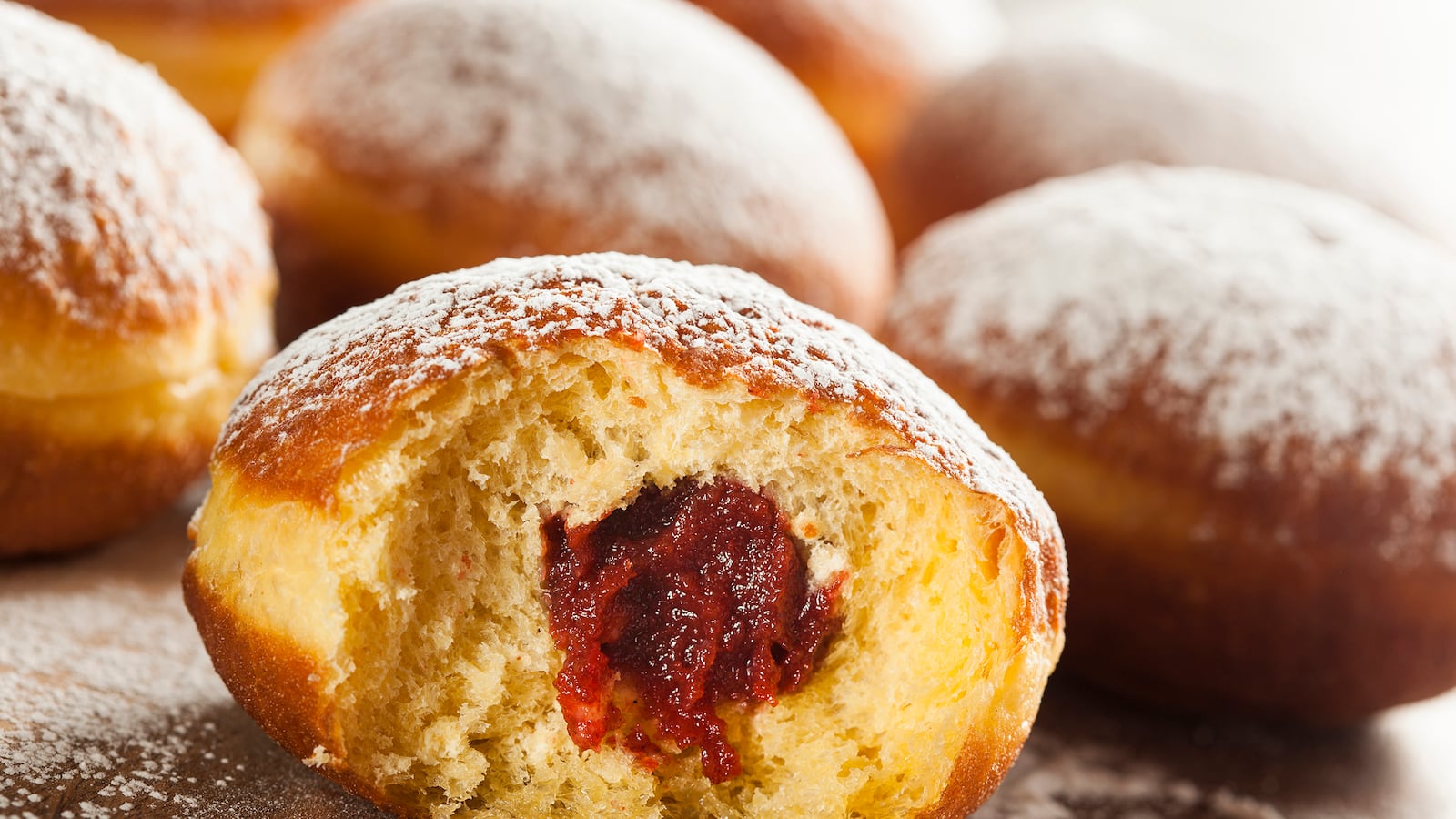“If I am there when Grace dances, I dance,” wrote poet W.H. Auden about partaking of the spirit of the moment.
My own riff might be: “If I am there when holiday foods are being eaten, I eat.” By doing so I feel a rather loose link to ancient traditions, especially as I take religion with a grain of salt or, at this season, sugar. Had I remembered, for example, that March 1 was St. David’s Day in Wales, I would have ordered leeks vinaigrette, either with toasted almonds at Vaucluse or with walnuts at Le Coucou as finding Welsh cock-a-leekie soup might not be possible. (Why leeks? The vegetable honors St. David because in the 7th century he is said to have advised Briton soldiers to wear the oniony stalks in their caps as a way to distinguish themselves from their Saxon enemies on the battlefield.)
There are, of course, many savory holiday foods especially with Passover and Easter in the offing, both of which are marked one way or another with spring greens, eggs, and lamb—signs of springtime and renewal.
But right now, and through the Easter season, sweet is the flavor of observance and buns are the iconic holiday foods of many cultures. I am determined to find at least one of each, starting with a hot cross bun, that light, sweet yeasty bread studded with candied fruits. The little domed delicacies are glazed to shiny temptation and are marked with a cross of sugar white frosting. As lovely with morning coffee as with afternoon tea or a glass of white wine, hot cross buns are a Shrove or Fat Tuesday tradition in England. This year they are being celebrated in London by the estimable chef Fergus Henderson at his St. John Bakery and several other of his outposts with “Bite My Buns” parties.
For the most part, the other buns are variations of what might best be described as crullers or doughnuts with variations in form and fillings. Most are fried, a custom that is said to date back to a time when, at the arrival of spring, cooks tried to use up the leftover cooking oils and fats saved during the winter.
The best-known example of that group in America is the humble jelly doughnut, a big, fist-sized yeast bun filled with jam such cherry, raspberry, or apricot, and liberally dusted with sugar. A descendant of the German Berliner pfannkuchen, which is at this season called either fastnachtkuchen or faschingkrapfen, honoring either Fastnacht, Fat Tuesday, or the bust-out pre-Lenten carnival, Fasching.
Stylishly trimmed down and a bit more compact in form, the eggy, spongey, cinnamon-scented Portuguese malasadas are Mardi Gras favorites as are the much-loved Polish paczki (PAN-tshki), a much more tightly wrapped, fried crunchy cruller, which at this season is likely to be filled with fragrant rose petal jam instead of the usual fruit preserves. The bakery of A. Blikle in Warsaw is most famous for pasczki. That’s a long way to go for a pastry even for me, but maybe I can find some at a Polish bakery no farther away than Brooklyn.
Perhaps the richest and most elegant of all such buns are those made throughout Scandinavia and called semlor in Sweden and variations of fastelavnsboller in other Nordic countries. These slightly flat, puffy buns are baked, not fried, and are split to be filled with almond paste and, for good measure, cloudlets of whipped cream. At their most traditional in Sweden, the cardamom scented semlor are served in bowls and set adrift in a little vanilla-flavored warm milk.
The Jewish springtime celebration of Purim offers two iconic pastries. Eastern European or Ashkenazic Jews order hamantaschen, the crisp triangular baked pastries filled most traditionally with poppy seeds, known as mun, or the velvety thick clove-accented black prune jam, known as lekvar. These days, however, that filling may be chocolate, or other types of jam or even ecumenically with dolce de leche. As Purim marks the downfall and defeat of the anti-Semitic tyrant Haman, some say the form of hamantaschen refers to his tri-cornered hat, but in fact, in both German and Yiddish, a taschen is a pocket, so who knows? All I know is that these treats are delectable. Sephardic Jews, of mainly Spanish and Portuguese descent, prefer orejas de Haman, or Haman’s ears, that are more or less delectably chewy ear-shaped knots of fried dough glazed with orangey honey.
Both Greeks and Italians set Easter breakfast tables with sweet yeast breads braided around colored eggs, basket-style. For the Greeks that date this year will be April 16th, which is when Orthodox Easter falls on the lunar calendar. This season, is also when Russians order up their lavish two-part treat, pashka and kulich, always served and eaten together. Paskha is a tower or cube of soft white cheese studded with candied fruits and blended with egg yolks and cream. It is meant to be spread on slices of kulich, a tall tower of sweet bread, much like a colorfully iced panettone. Sides of both are marked in red frosting with the letters “XB” symbolic of the Easter greeting, “Christ has risen.” Early on Easter morning, both are carried to church in baskets to be blessed by priests, and only then can they appear on the festive breakfast table.
Naturally, all this talk has made me hungry. Now is the time to bite some buns!






